Chardonnay is one of the most widely planted varieties. Although best known as the white grape of Burgundy and the cornerstone of Champagne, it is produced to a huge spectrum of wine styles. From a creamy, buttery, oak-aged to a lean and crisp sparkling wine, Chardonnay is versatile, approachable, and greatly revered.
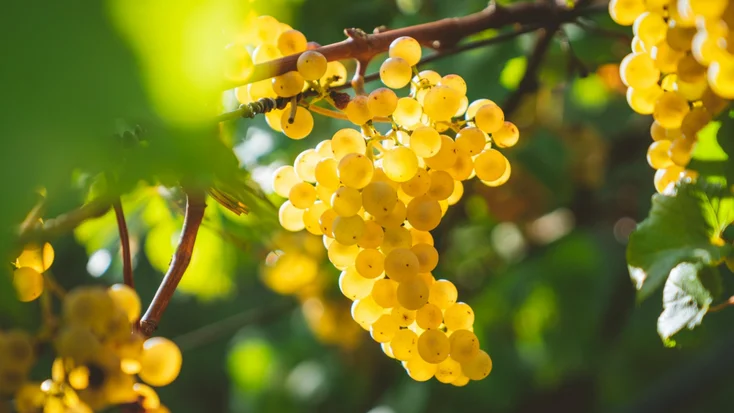
Chardonnay’s origins
シャルドネは、グアイ・ブラン(リースリングをはじめとする多くの有名品種の親)とピノ(ピノ・ノワール、またはその突然変異種)との交配によって生まれた品種です。
中世のブルゴーニュでは、このピノとグアイ・ブランが主要な品種だったと考えられています。
「シャルドネ」という名前は、マコネ地区にあるシャルドネ村に由来するとされています。
「マコン・シャルドネ」とラベルに記載されている場合、これはブドウ品種ではなくその村(産地)名を指しているのです。
興味深いことに、その地で造られるワインは比較的手頃な価格で提供されており、コストパフォーマンスの高いワインとして知られています。
Chardonnay growing regions
国際ブドウ・ワイン機構(OIV)による最後の大規模な世界調査は2015年に実施されたもので、その時点で**41か国に約21万ヘクタール(51万9,000エーカー)**のシャルドネが栽培されていました。
この調査時点では、シャルドネは世界で第5位の栽培面積を誇っていました。その後、アイレン(Airen)を上回った可能性がある一方で、シラー(Syrah)に追い抜かれた可能性もあります。
同調査で言及された主要な栽培国は以下の通りです:
- フランス:51,000ヘクタール(国内ワイン用ブドウ畑面積の6.3%)
- アメリカ:43,000ヘクタール(9.7%)
- オーストラリア:21,000ヘクタール(14.1%)
- イタリア:20,000ヘクタール(2.9%)
- チリ:12,000ヘクタール(5.6%)
- 南アフリカ:8,000ヘクタール(6.2%)
- アルゼンチン:6,000ヘクタール(2.7%)
Burgundy: Chardonnay’s spiritual home
シャブリは、シャルドネのミネラル感が最も際立つスタイルを示す産地です。
その中でも「シャブリ・グラン・クリュ」のワインは、より凝縮感があり、一部はわずかにオーク樽のニュアンスを伴うことが多いです。
一方「シャブリ・プルミエ・クリュ」は、このグラン・クリュと通常のシャブリの中間的なバランスを持っています。
コート・ドール地区では、北側に位置するコート・ド・ニュイは主にピノ・ノワールの産地ですが、例外的にミュジニー・ブランやヴージョのル・クロ・ブランなど、一部で白ワインも造られています。また、より広域の村名アペラシオンとしても白が見られます。
しかし、シャルドネが真価を発揮するのは、コート・ド・ボーヌ地区です。
ボーヌの町のすぐ北には、有名なコルトンの丘があり、「コルトン・グラン・クリュ」のワイン(特にコルトン・シャルルマーニュ)が知られています。
また、ボーヌ南部には、ムルソーやシャサーニュ=モンラッシェ、ピュリニー=モンラッシェといった著名で高価なワイン産地が集中しています。

いずれも非常に高く評価されており、特にグラン・クリュ「ル・モンラッシェ」は、Wine-Searcherにおいても最も人気の高いスティルワインのシャルドネのひとつとして知られています。
そのモンラッシェ地区のすぐ西側の谷間に位置するサン・トーバンは、優れた品質でありながら手頃な価格のシャルドネの産地としても知られています。
さらに南へ進むと、「シャルドネ村」が存在するマコネ地区、コート・シャロネーズ、プイィ・フュイッセといった地域でも、高品質でコストパフォーマンスの高いシャルドネが造られています。
Elsewhere in France
前述のとおり、シャンパーニュ地方もシャルドネの主要な産地のひとつです。特にコート・デ・ブラン地区では、シャルドネが大部分の畑を占めており、シャンパーニュのブレンド全体においても頻繁に使用されます。ラベルに「ブラン・ド・ブラン」と記載されている場合、そのワインは通常**シャルドネ100%**で造られていることを示しています。
また、サヴァニャンと並んでジュラ地方の主要な白ブドウ品種のひとつであり、さらに南に位置するサヴォワ地方の主要品種リストにも含まれています。より広い意味では、シャルドネはフランス全土で栽培されており、多くの場合、地域ごとの**IGP(地理的表示保護)**ワインの中にも見られます。
Europe and the New World
その人気の高さにふさわしく、シャルドネは世界中で栽培されています。
たとえば、スペインのソモンターノやイタリアのフリウリの丘陵地帯から、ニュージーランドやタスマニアといった冷涼な気候地域にまで広がっています。
一方で、南アフリカ、カリフォルニア州、西オーストラリア、オーストラリア本土、チリ、アルゼンチンといった温暖な地域のブドウ畑でも多く見られます。
Other Chardonnay wine styles
シャルドネは、一般的にはスティルタイプの辛口ワインで最も有名ですが、実際には非常に多様なスタイルのワインが造られています。
この品種は世界各地でスパークリングワインにも使用されており、特にシャンパーニュがその代表例です。多くの場合、ピノ・ノワールとブレンドされますが、**単一品種(シャルドネ100%)**でも造られ、「ブラン・ド・ブラン」という表記でよく知られています。
実際、世界でも最も高く評価されているシャルドネの一部はスパークリングワインです。たとえば、サロンの「キュヴェS」、テタンジェの「コント・ド・シャンパーニュ」、クリュッグの「クロ・デュ・メニル」などは、いずれもブラン・ド・ブラン・スタイルで造られています。
また、シャルドネは貴腐ワイン(ボトリティス)や遅摘みワインとしても使われることがあります。カナダでは甘口のシャルドネ・アイスワインも生産されています。ただし前述の通り、シャルドネは樹上で長く熟すと酸味を多く失いやすいため、遅摘みタイプのシャルドネはあまり一般的ではありません。
What does Chardonnay taste like?
Despite its global success, Chardonnay as a grape is relatively neutral and it is not considered an aromatic variety. Indeed, it is often dubbed “the winemaker’s grape”, for it is in the winery that many of its defining characters are amplified or reduced. Made in a variety of styles, Chardonnay wines can show fruit notes that run from citrusy and mineral to exotic and toasty.
At its most basic, Chardonnay produces wines of a light golden hue, with notes of citrus, green apple, blossom and almonds or oatmeal. On the palate, Chardonnay has moderate acidity and moderate alcohol with a medium body.
Climate, as well as viticulture and winemaking, play a major role in the aromas and flavors of the resulting wine.
Food pairings
Because of the wide variety of styles it is hard to generalize here. Cool climate Chablis with little or no oak influence can be a zingy, citrus-laden partner to many lighter seafood dishes.
Richer styles which show some barrel influence would be equally fine with bolder fare such as lobster or monkfish. Their buttery characters would complement many sauces; at the same time there should be enough acidity to cut through cream and butter.

Bolder wines will pair well with a number of chicken and pork dishes. An oaky Chardonnay often works well with roasted root vegetables.
But above all Chardonnay can excel as a cheese wine. The combination of citrus and tropical flavors, cream and butterscotch can work fantastically well with nutty creamy cheeses such as raclette. Oaked Chardonnay matches very well with Stilton, though Roquefort seems to clash.
The effect of climate on Chardonnay flavors
The very coolest Chardonnay vineyards (those in Chablis, Champagne and Germany, for instance) lean towards green apple aromas. Mineral descriptors such as chalk, wet stones and crushed seashells also find their way into Chardonnay tasting notes.
These are sometimes attributed to the soils in the vineyard. The wines of Chablis, for instance, often show Chardonnay at its most mineral, with little or no oak used in the winemaking process and often notes of citrus, blossom and chalk are encountered along with high levels of acidity.
Chablis’ famous Kimmeridigan, ancient oystershell soils are often credited with this chalky minerality. This can be contrasted with the more full-bodied Chardonnays of the New World.
Indeed, while winemaking and styles of Chardonnay have evolved in the last decade or so, New World Chardonnays (from the likes of Australia or California) often show more body, fruit and palate weight, with exotic fruit notes and toasty oak on the nose. Broadly speaking, these warm regions, which also include Chile, South Africa and Argentina tend to give more tropical styles.
Stylistically, most global examples of still, dry Chardonnay fall somewhere within this spectrum. The wines of Burgundy, for instance, strike a note that incorporates the minerality of Chablis and some of the power of the New World, often incorporating oak and giving intriguing (sometimes subtle) stonefruit aromas, with concentration of flavor and an impressively balanced and fresh length on the palate.
For many Chardonnay drinkers, from winemakers to wine lovers, Burgundy remains the touchstone by which Chardonnay is judged.

Alone, the variety itself (although relatively flavor-neutral) is responsible for most of the fruity flavors found in Chardonnay wines. These range from the tropical (banana, melon, pineapple and guava) to stonefruits (peach, nectarine and apricot), to citrus and apples.
However, a number of other viticultural and winemaking approaches can also affect the final flavor.
Vineyard factors
In general, Chardonnay grows well in a variety of climates, though yields can vary from low to moderately high. Clusters and berries are both on the smaller side. The vine growth is relatively vigorous and concentration of flavor in the final wine may involve a degree of crop-thinning in the growing season.
Vines bud and flower early in the season, making them susceptible to spring frosts and viticulturists in cool climates such as Chablis (and wider Burgundy and Champagne too) have traditionally mitigated this by lighting braziers between the vine rows (a reasonably effective and traditional, albeit not environmentally-friendly, solution).
Some parts of Chablis are protected by water sprinklers in which water freezes around the nascent bud, actually protecting it. Other techniques include warming the fruiting wires in the vineyard trellis.
Although, generally speaking, Chardonnay has moderate to high acidity, in very warm climates (and with extended hang-time over harvest) Chardonnay grapes can lose their natural acidity, resulting in flat, overblown wines.
The variety is susceptible to powdery mildew, phytoplasmas (parasites in plant phloem tissue) and botrytis.
Clonal selection
In the vineyard, clonal selection is a major factor – albeit probably not to the degree of Chardonnay’s Burgundian counterpart, Pinot Noir. In the New World especially, clones are often mentioned in marketing text or even on bottle labels.
The Mendoza clone, for example, is known for its variability in berry size; it brings both freshness and concentration). UCD (University of California-Davis) Clone 15 meanwhile, is known for its pithy aromatic notes and acidity. The latter was actually sourced in Washington (where it is sometimes called the Prosser clone).
Burgundian clones – while perhaps appearing more serendipitously in Burgundy via artisanal propagation – are also frequently encountered, including the classic clone 95 which gives lemon and blossom notes. Also isolated in Burgundy are a number of muscat-like clones of Chardonnay, sometimes encountered in a wine as a Chardonnay Musqué, but more often used (in Burgundy and abroad) as a blending component to add aromatic complexity.
Winemaking effects on Chardonnay flavors
Whole bunch pressing
It is generally accepted that pressing Chardonnay with the bunches intact gives better quality juice due to a number of factors but mainly through efficient pressing and keeping fruit intact until the moment of pressing. Whole-bunch pressing is expensive, however, as it requires fruit to be hand-harvested and carefully transported (and stored, in some cases).
Lees
At this time too, a winemaker may decide to run the freshly pressed juice directly into barrel rather than the standard white winemaking procedure of pressing to a tank and separating the juice from its gross lees (solids that settle out from the juice) at a later time.
Putting juice straight to barrel and initiating a so-called “high solids” fermentation can add greater palate weight, or body, in the final wine. However, it can also affect the potential for reductive notes to appear (as can the likes of Nitrogen deficiency in the soil).
Reduction (the opposite of oxidation) in Chardonnay is a contentious matter, even among winemakers. Some very much embrace the background hints of struck match (often accentuated by or mistaken for new oak), rubber, or onion. Others consider it a winemaking fault.
Aging Chardonnay on lees (which can be stirred with varying degrees of regularity) will add some body to the wine. It will also impart biscuity and doughy flavors.
Malolactic fermentation
Secondary or malolactic fermentation is also a major stylistic choice among winemakers. Some New World winemakers, wanting to preserve acidity (and freshness) may elect not to put the wine through malolactic fermentation (in which malic acid, from the Latin for apple, is converted to the softer lactic acid, as found in milk) – a process which reduces the overall acidity in wine.
Malolactic fermentation is, however, a relatively naturally occurring phenomenon. It can happen any time after primary (alcoholic) fermentation – and in some cases overlaps it. Malolactic fermentation gives distinctive buttery aromas to the final wine (often a good flavor combination with toasty notes from new oak).
Oak fermentation and maturation
Lastly, the use of oak can have a major effect on the finished wine. Fermenting wines and aging them in oak is often encountered in Chardonnay production and the degree of new oak, which imparts the vanilla, smoke, hints of sweet spices such as clove and cinnamon, can be a major factor in a young wine’s aroma and, to a degree, palate profile.
Oak can also interact with other winemaking aspects, highlighting reduction (as noted above) while also encouraging a degree of slow oxidation (irrespective of old and new barrels). Depending on the winemaking regime, oxidation rates can be further increased by regular lees stirring.
This is why the percentage of oak and/or of new oak used in making a Chardonnay is often noted by tasters.
Some winemakers, such as those in the Jura will even work with oxidation and encourage it in the final wine, very much in keeping with local winemaking traditions. Such Chardonnay wines are often labeled “sous voile” (“under a veil” – a nod to the layer that forms on the surface of the wine).
At this point, it is important to note that there is a difference between oxidative winemaking (as found in Jura and Sherry) which gives bruised apple notes, and a wine that is oxidized in bottle – a wine fault.
Synonyms
Morillon, Pinot Chardonnay, Feiner Weisser Burgunder.



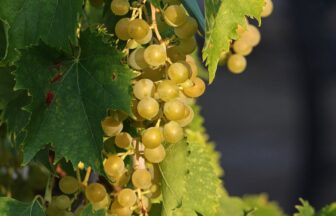
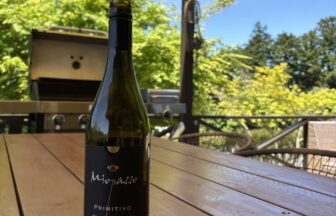
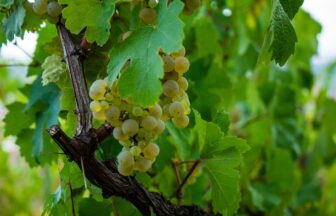
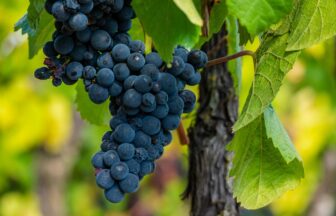
この記事へのコメントはありません。